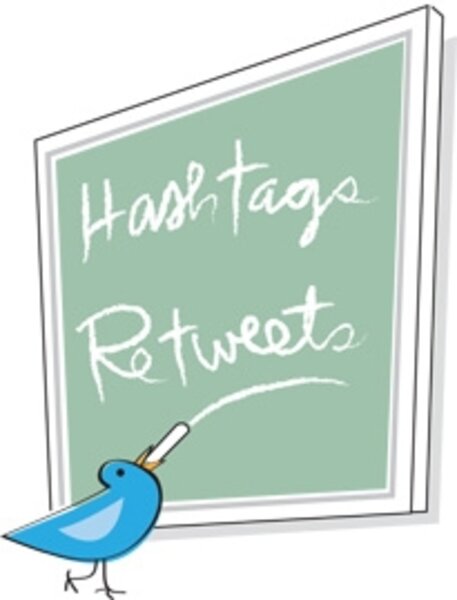A primer on Twitter
As the microblogging website Twitter takes off, more than a few people are scratching their heads. After initial skepticism about the usefulness of a constant stream of 140-character messages, newcomers also need to decipher a new set of slang.
Just as e-mail and instant messages inspired “lol” and “btw,” Twitter users have invented their own terms – shorthand that makes the service more efficient and handy. These abbreviations develop rather organically. Clever conventions spread from user to user. Bad ones are ignored and die off.
This community effort is great for the faithful, but can be frustrating for Twitter novices. So, in lieu of an official manual, here’s a quick guide to Twitter slang.
User names
Just like with instant messengers, everyone on Twitter has a unique user name. For example, last week the Monitor set up a Twitter account specifically for the Horizons personal technology blog: csmhorizonsblog.
When you set up an account, Twitter gives you your own website that will automatically display all of your recent Twitter messages, or “tweets.” The address for this website is the same as your user name. In our case, it’s twitter.com/csmhorizonsblog.
A lot of tweets are just broadcasting the thoughts and activities of the author to anyone who will read them. But there are ways to directly respond to other users. If you want to comment on a Horizons post, include “@csmhorizonsblog” in your tweet. This targeted message will appear on your list of recent tweets and pop up for the other user, even if the person you’re talking about doesn’t follow your messages. A lot of people put @ at the beginning of a tweet, but it can go anywhere in the message.
The @ isn’t perfect. Since your friends can’t track every message that you read on Twitter, your @ messages may only give them half of a conversation. Once posted, the @ symbol automatically turns into a link to that user’s Twitter page. This allows friends to see whom you’re talking about – but not the specific message that you’re referencing.
Retweet
Some tweets begin with the letters RT. That’s a “retweet” or a rebroadcast of someone else’s message. If you see a clever tweet that you want to pass along to your friends, you can copy and paste it into your own Twitter feed, then add RT to the beginning. Make sure to include @ and the original poster’s user name to give credit to the author. Here's an example.
RT has been used to share interesting links or spread public-service announcements.
Hash tags
Bloggers often go on about Twitter being an excellent source of breaking news. But if you’re new to the site, where do you start looking?
Heading to search.twitter.com is a good way to begin. Try typing in the # symbol followed by a category or event that interests you.
Worried about executive bonuses? Try searching for #AIG. Big fan of video games? You can learn the latest news out of this week’s Game Developers Conference in San Francisco by looking for #GDC.
Not everyone on Twitter uses these category tags, and not everyone can agree on which terms to use – #GDC or #GDC2009 or #GDC09? But # is an easy way to hunt for interesting messages and maybe find new users to follow.
Once you’re used to tweeting, try adding category hash tags in your own posts. Then people can stumble upon your messages by searching.





